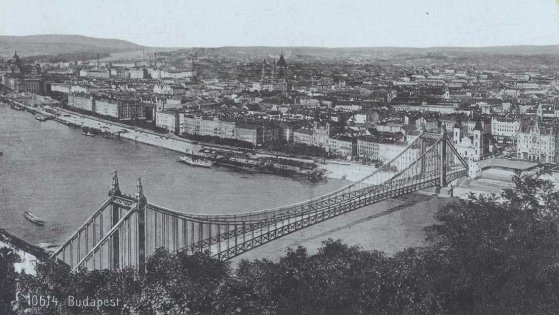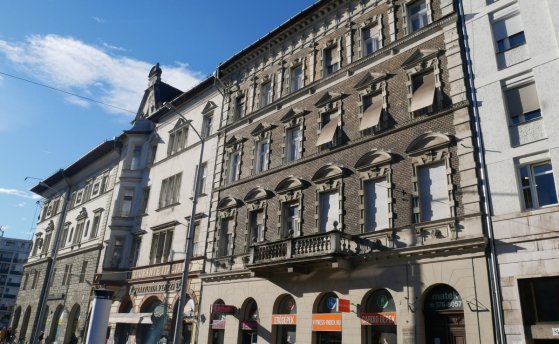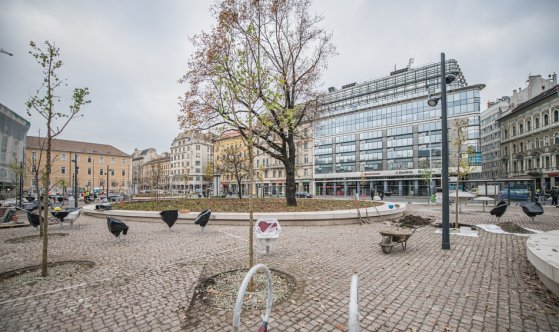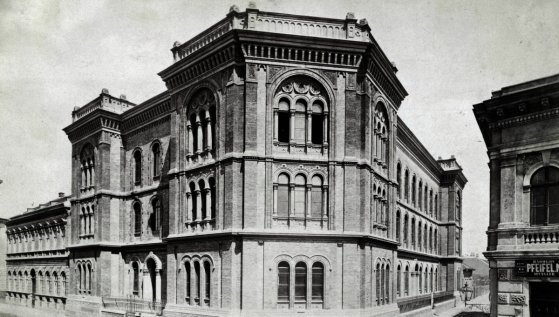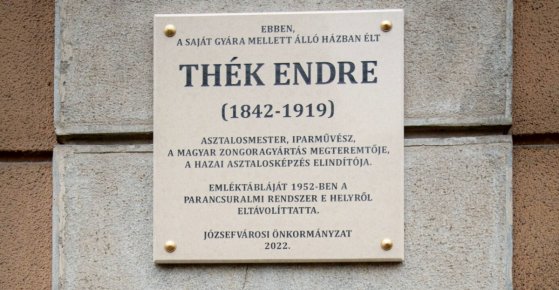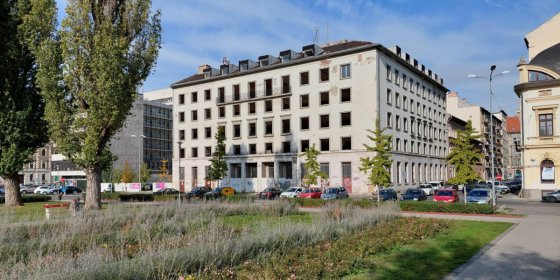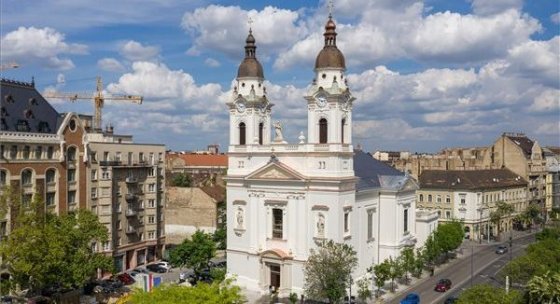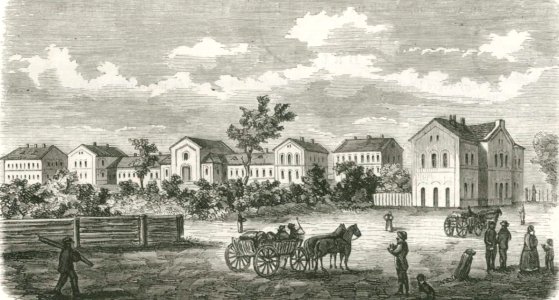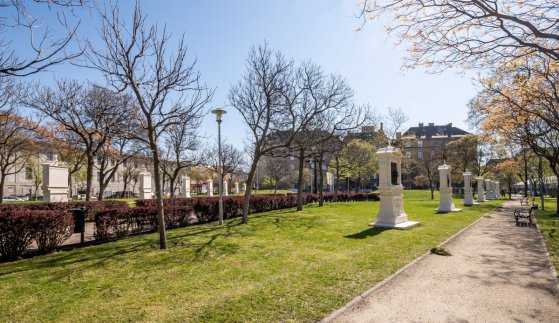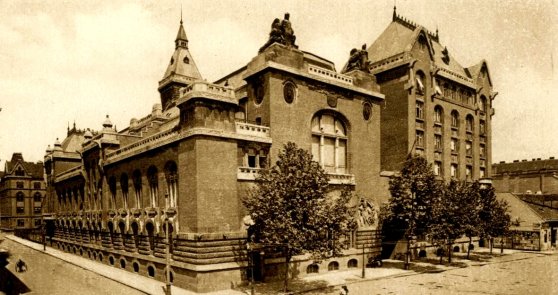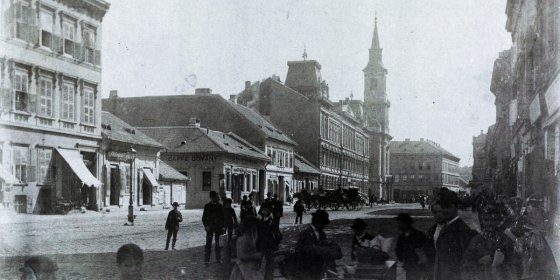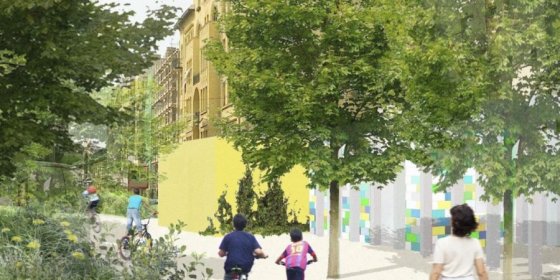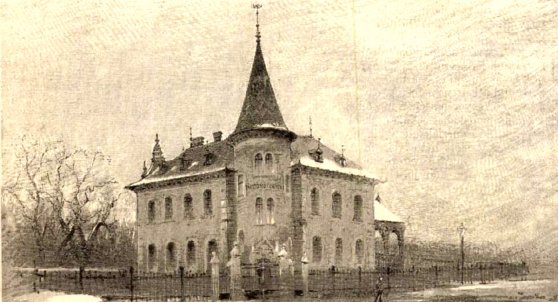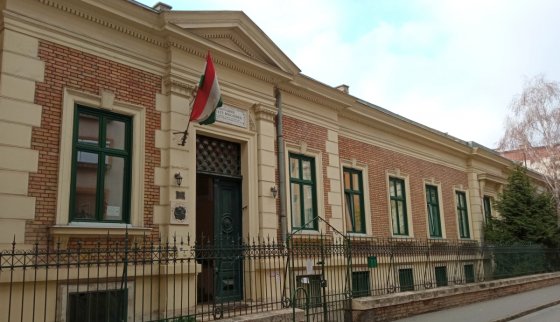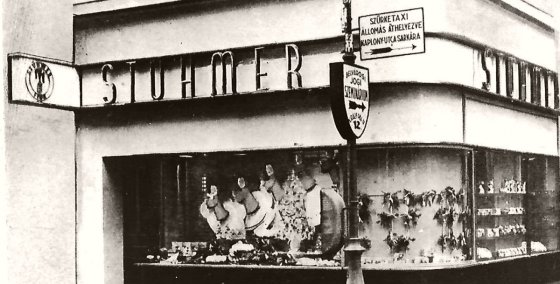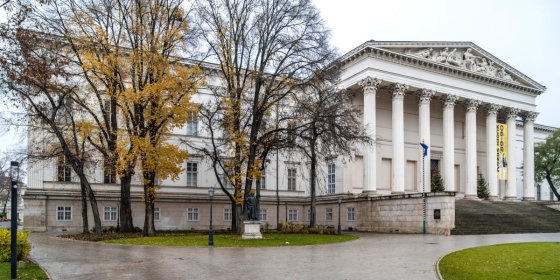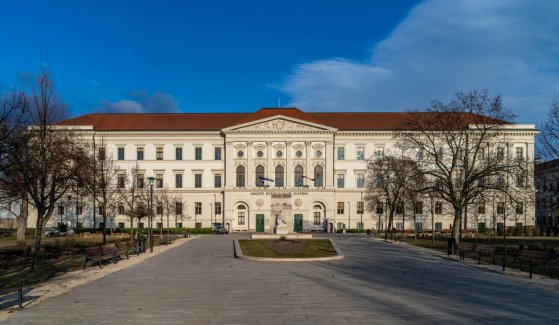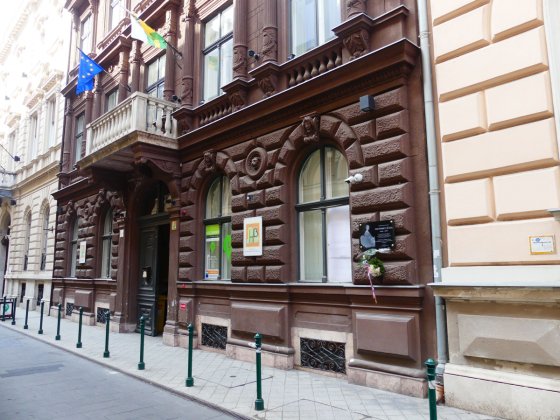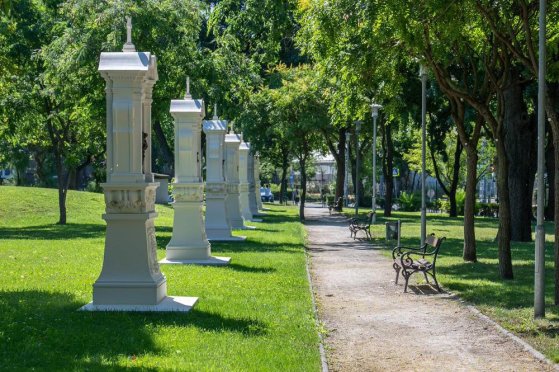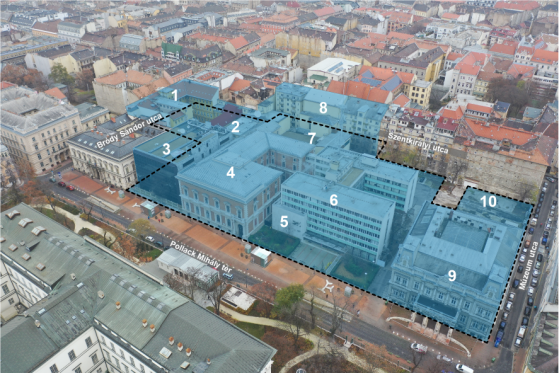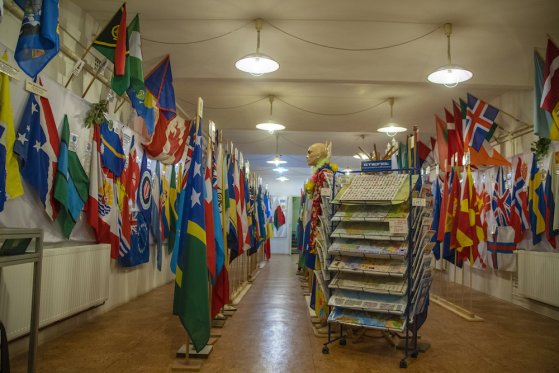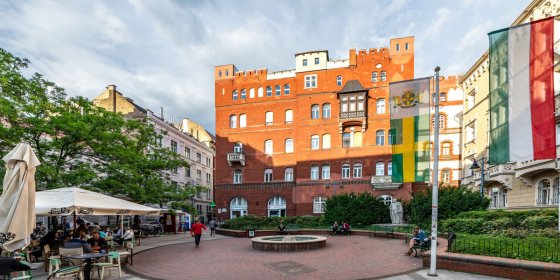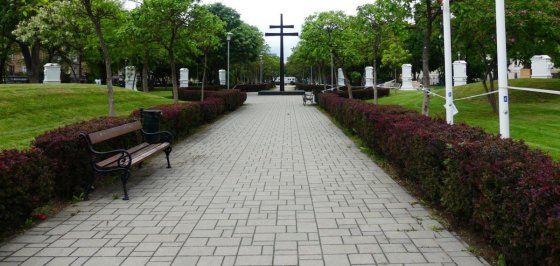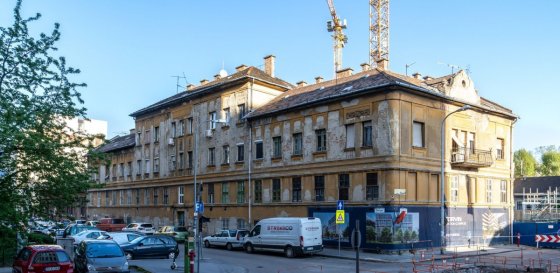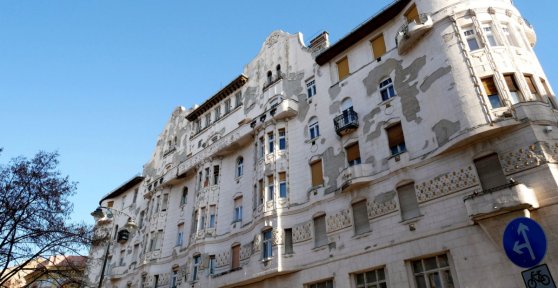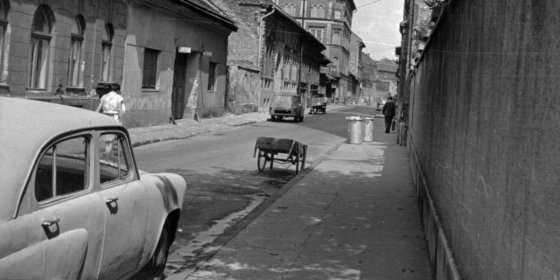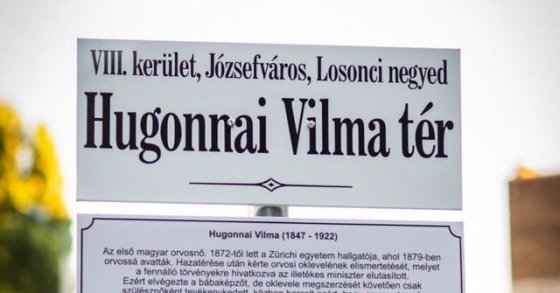 The „intertwined history” of the bridges and the city of Budapest
Which ideas and events have shaped the fate of bridges of Budapest and the cityscape? Alongside many other interesting facts, this question is also answered this newly published book by the Budapest City Archives, which introduces the history of bridges in Budapest.
The „intertwined history” of the bridges and the city of Budapest
Which ideas and events have shaped the fate of bridges of Budapest and the cityscape? Alongside many other interesting facts, this question is also answered this newly published book by the Budapest City Archives, which introduces the history of bridges in Budapest.
Józsefváros
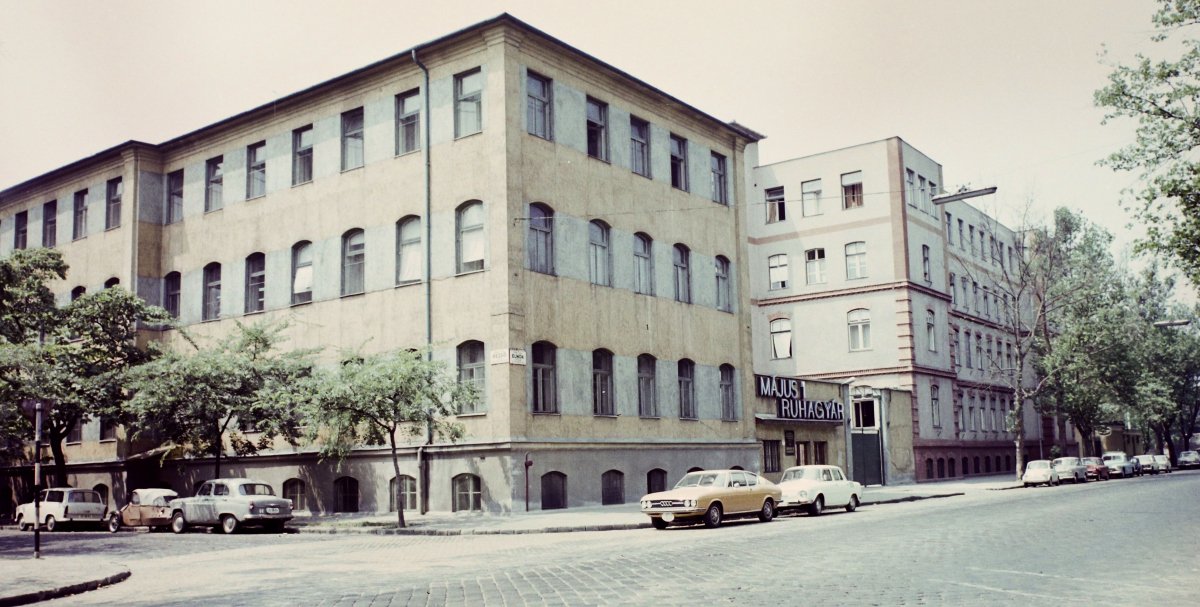 The story of a famous clothing factory in Józsefváros
The story of a famous clothing factory in Józsefváros
March 27, 2023 at 11:00 AM
Close to Nagyvárad Square, at the junction of Elnök Street and Orczy Road, there is a complex of buildings with a huge floor area. There is an office building, a jewellery store, a tailor shop, a communications technology company, a photography and video recording company, and even a table tennis club. In the 1960s and 1970s, one of the largest clothing manufacturers in the country operated behind the walls, but the story did not begin then but at the end of the 19th century.
Budapest then and today – 5 photos showing how much the city has changed
February 23, 2023 at 4:00 PM
The capital, which is 150 years old this year, has changed so much over time that every day citizens can marvel at a section of a street, an old building that has disappeared or that has miraculously survived. This time, with the help of five pairs of images, Pestbuda presents the passage of time from the houses of the old inner city of Pest to the flood in Tabán.
The house on József Boulevard, where Feri Neumann became Ferenc Molnár
January 20, 2023 at 10:00 AM
Ferenc Molnár, who was born 145 years ago this January, is one of the most well-known and beloved figures in Hungarian literary history abroad. Pestbuda also wrote about him several times in connection with his novels, dramas and connections to the capital. The writer's own life was also like a novel, full of twists and turns, successes and failures. The house on József Boulevard, which was built by his father and where he lived for the longest time in the capital, was the most important symbol of permanence.
The renovated Blaha Lujza Square to be handed over this year
November 30, 2022 at 5:00 PM
The renovation of Blaha Lujza Square will be completed by the end of the year. The technical handover started on 29 November, there may still be minor repair work, but pedestrians can take possession of the space this year. Eleven small-sized, so-called micro-sculptures were also placed on the seating surface of the plant cassettes. The works present the acting legends of the former People's Theatre then National Theatre in their iconic roles.
The rabbinical seminary opened its doors in Budapest 145 years ago
November 8, 2022 at 4:00 PM
In Budapest, at the corner of Bérkocsis and Bodzafa Streets in the Józsefváros district - at the intersection of today's Gutenberg Square, Scheiber Sándor and Somogyi Béla Streets - in October 1877, a solemn event took place that was rare even in the world of the time. The rabbinical seminary, in which Israelite students began their studies, opened its doors to the Hungarian Jewish people.
Endre Thék's memorial plaque was inaugurated in Józsefváros
November 8, 2022 at 11:30 AM
Endre Thék was the biggest figure in Hungarian furniture production. In honour of the master woodworker, furniture and piano manufacturer, a memorial plaque was placed on the building under 66C Üllői Road in the 8th District, where his home was. At the current inauguration, the original plaque removed in 1952 was replaced.
The Party Office on the former Köztársaság Square does not allow the past to be sealed off
October 22, 2022 at 9:00 AM
Although the party office with a dark past has been continuously deteriorating for years in the former Köztársaság, today's II. János Pál pápa Square, it has not yet been possible to demolish or rebuild it. Moreover, its immediate surroundings were recently declared life-threatening and closed, so instead of being converted into a residential building as planned, the socialist realism style building continues to remind us of the bloody events of the 20th century and the 1956 revolution.
Interior of the St. Joseph Parish Church has been renovated
September 20, 2022 at 6:00 PM
The renovation of the St. Joseph Parish Church in the 8th District, Horváth Mihály Square, has been completed. After the renovation of the facade, the reconstruction of the interior of the church was also completed this year.
Trains departing from the 155-year-old Józsefváros railway station connected Losonc to Budapest
May 19, 2022 at 1:00 PM
The Józsefváros railway station, the third of Budapest's railway stations, was originally built for a private railway that later went bankrupt. The company was taken over by the state, and this decision brought about significant changes in Hungarian transport policy.
The Calvary on Golgota Square has been restored
April 15, 2022 at 1:30 PM
Before the turn of the century, the Calvary on Golgota Square in Józsefváros was built, demolished in 1971, and the chapel was blown up. In recent years, the stations of Calvary, which were handed over on Friday, have been restored.
The Józsefváros Telephone Centre fit perfectly into the city, today it houses elegant hotels
February 23, 2022 at 9:00 AM
The incorporation of industrial buildings into the urban environment was an important urban development issue in the 1880s. On the one hand, they tried to move - in many cases relocate - the noisy large plants that often emit polluting substances farther from the city centre, and on the other hand, the leaders of the capital wanted to design the centres suitable for the development and service of public utilities and communications in such a way that they fit as closely as possible into the architecture of a given street or space. Fortunately for posterity, this intention has mostly produced eye-catching results, a good example of which is the József Telephone Centre.
Crowded homes, high mortality: the people of Pest did not have an easy life 150 years ago
February 16, 2022 at 10:00 AM
Today, we cannot imagine the misery of the people of Pest in certain parts of the city before the unification of the city. Nor was it rare, according to statistics from 150 years ago, for several families to live in a single room. Those living in a room crowded with 6 to 10 people died sooner, and the average life expectancy, even in the best parts of downtown, was less than 26 years. PestBuda's article reveals that the misery was great, especially in Ferencváros and Józsefváros, but the situation did not improve in the other districts of the capital for a long time.
This will be the new promenade in Józsefváros
February 2, 2022 at 4:00 PM
The construction of a new pedestrian-friendly promenade in Józsefváros, in the vicinity of the Rákóczi square fairgrounds, is expected to start in the spring. It will give pedestrians more space, build a playground and plant trees. The visual design is complete, we'll show it.
A public statue was erected to Móric Benyovszky in Józsefváros
December 17, 2021 at 5:00 PM
Móric Benyovszky received a public sculpture in the 8th district in Józsefváros. The Hungarian world traveler was born 280 years ago, died 235 years ago, and the inauguration of his bronze portrait was the closing event of the Benyovszky Memorial Year.
The Home of Hungarian Teachers is still standing today - Teachers living in poor conditions could move into the tower building
December 17, 2021 at 10:00 AM
At the beginning of Orczy Road, close to Nagyvárad Square, stands a house with a tower, reminiscent of a medieval castle, quietly hiding behind the surrounding trees. Few know that this building once served as the home of the poor teaching women in the capital.
The most beautiful nursery in Pest was designed by Miklós Ybl
December 2, 2021 at 2:00 PM
At the corner of the Nagy templom and Nap Street in Józsefváros is a beautiful house made in the Neo-Renaissance style. It is already important because of its designer, Miklós Ybl, but the client, the First Pest Nursery Association, also makes the building - still operating in education - special.
Sweet life in happy times of peace - The Stühmer Factory from foundation to nationalisation
November 29, 2021 at 11:30 AM
Tibi chocolate, Ropp wafer and Zizi dragee. Generations have known and loved the popular products of the Stühmer Chocolate Factory. How did Frigyes Stühmer create Hungary's first and largest chocolate factory in Józsefváros during the Compromise-period and why did the factory have to move to the neighbouring Ferencváros? The factory was nationalised after World War II, and descendants who moved to Canada tried unsuccessfully to reclaim it in the 1990s, yet the brand name, founded more than 150 years ago, has not been forgotten.
The interiors of the Hungarian National Museum are being renovated
November 14, 2021 at 4:00 PM
Internal renovation work has begun at the Hungarian National Museum, during which the reception areas and the museum shop, as well as a café, will be renovated.
Renovation of Ludovika continues - We have the designers
September 22, 2021 at 2:30 PM
Renovation of two more parts of the building may begin in the near future on the Ludovika Campus of the University of Public Service. Based on the recently completed public procurement procedure, the planning of the reconstruction of the so-called Tóparti building in the Diószegi Street section and the planning of the renovation of the Ludovika Fencing Hall and Event Center on Üllői Street will begin.
A memorial plaque was erected on the former residence of Julia Szendrey
September 7, 2021 at 5:30 PM
In the last months of her life, she lived at 13 Horánszky Street, formerly Zerge Street, in Józsefváros. Júlia Szendrey, poet, writer and translator, Petőfi's wife and muse. His memory is now commemorated by a plaque on the façade of a house in the Palace Quarter.
The stations of Golgota Square were erected
August 23, 2021 at 3:30 PM
The rebirth and re-creation of a lost, destroyed monument is always a joy for the community. Especially when it comes to a work of special significance, such as the Calvary in Golgota Square in Józsefváros, which was demolished in 1971. The 14 stations are now visible again in their original beauty.
By the end of the year, the plans for the new campus of the Pázmány Péter Catholic University will be completed
July 26, 2021 at 5:00 PM
The monumental values of the Károlyi Palace and the Esterházy Palace must be preserved and the spirituality represented by Catholic education must be displayed - these conditions must also be met by the 12 architectural firms that were given the opportunity to design the campus of Pázmány Péter Catholic University in Józsefváros. The task must be completed by September, and the results will be announced in November.
The unique collection of the Flag Museum will be on display again
July 2, 2021 at 4:30 PM
The Hungarian Museum of Trade and Tourism hosts the Flag Museum, which has been operating in Józsefváros since 1995. In the spring, the local council decided not to support the institution, which closed in the room on the corner of József körút - Nap utca. After scientific processing, the collection will be re-presented to those interested in temporary exhibitions.
Fountain on Mikszáth Square under renovation
June 8, 2021 at 3:30 PM
Maintenance of the fountain last renovated in 2014, but out of operation for the past two years will begin in the middle of June.
Stone column of every station standing on Golgotha Square
May 23, 2021 at 6:00 PM
Fourteen stone statues have already been erected on Golgota Square in Józsefváros. Bronze reliefs depicting the stations of the cross have been placed within them. The restoration of the stations was initiated by the Józsefváros Local Council in 2019 and is being carried out with state funding.
Demolition: Irén Psota's birthplace to be destroyed
May 12, 2021 at 2:00 PM
Another detail of the old Budapest is set to disappear, as the demolition of the building at 23/A Tömő Street in Józsefváros will begin soon. The four-storey building, built in the 1880s, in which actress Irén Psota was born, was sold by the local council in 2019, and the new owner has already received a demolition permit.
The future of Gutenberg – Construction of printers' headquarters began 115 years ago
January 25, 2021 at 9:00 AM
The construction of a masterpiece of Hungarian Art Nouveau architecture, Gutenberg House, began in 1906. The residential building that served cultural purposes for several decades is still unique, despite losing much of its charm over the last few years. The sculptures and murals that adorned its facade were destroyed almost 50 years ago, this stunning building would deserve to be restored to its original condition.
Fifty years ago large-scale plans to redesign Józsefváros were born
December 30, 2020 at 9:00 AM
Various plans to redesign the inner sections of Józsefváros and replace the out-dated kitchen and room flats built at the end of the 19th century were floated decades ago. Fifty years ago the Budapest Council adopted a large-scale plan to demolish 3,400 flats. By the time the district already had mixed experiences of how the city centre could be rehabilitated.
Square named after Vilma Hugonnai in Józsefváros
September 11, 2020 at 4:00 PM
The previously unnamed square that houses the monument to the doctors that died in World war I, in front of the Department of Obstetrics and Gynecology of Semmelweis University, has been named after Vilma Hugonnai, the first female Hungarian doctor.
More articles
 The „intertwined history” of the bridges and the city of Budapest
Which ideas and events have shaped the fate of bridges of Budapest and the cityscape? Alongside many other interesting facts, this question is also answered this newly published book by the Budapest City Archives, which introduces the history of bridges in Budapest.
The „intertwined history” of the bridges and the city of Budapest
Which ideas and events have shaped the fate of bridges of Budapest and the cityscape? Alongside many other interesting facts, this question is also answered this newly published book by the Budapest City Archives, which introduces the history of bridges in Budapest.
 The Bridge Report, which brought a turning point in the history of Budapest
A travel report that changed the history of Pest and Buda, as well as Hungary. The little book contributed to the change of half a thousand years of legal customs and the implementation of an investment of unprecedented size and technical quality. This book was The Bridge Report [Hídjelentés in Hungarian].
The Bridge Report, which brought a turning point in the history of Budapest
A travel report that changed the history of Pest and Buda, as well as Hungary. The little book contributed to the change of half a thousand years of legal customs and the implementation of an investment of unprecedented size and technical quality. This book was The Bridge Report [Hídjelentés in Hungarian].
 Drama on the university wall - The heroic monument was planned 95 years ago
In the constant hustle and bustle of the Egyetem Square in Pest, the students may not even notice the monument that decorates the short section of wall between the church and the central building of ELTE. However, it commemorates their predecessors, the heroes who fought for their country in World War I, and those who heroically helped them. The first design of the dramatically collapsing soldier was born in 1928, ninety-five years ago.
Drama on the university wall - The heroic monument was planned 95 years ago
In the constant hustle and bustle of the Egyetem Square in Pest, the students may not even notice the monument that decorates the short section of wall between the church and the central building of ELTE. However, it commemorates their predecessors, the heroes who fought for their country in World War I, and those who heroically helped them. The first design of the dramatically collapsing soldier was born in 1928, ninety-five years ago.

